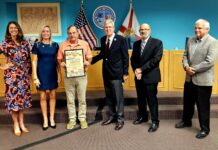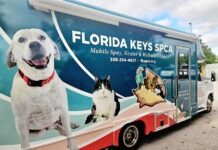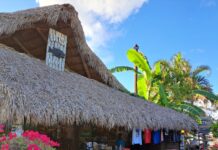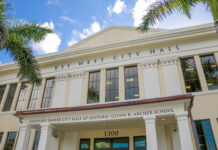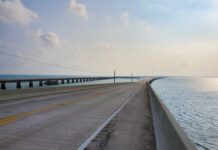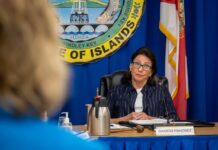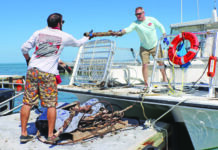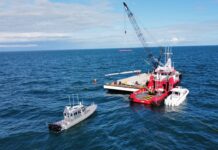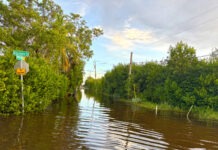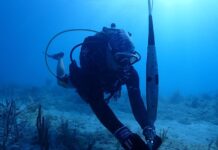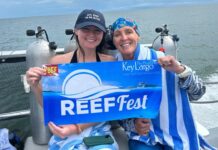For 32 years, Reef Relief has fought incredibly hard to keep our reefs alive and protected through educating our community and its many visitors. Through our outreach programs, we have seen firsthand just how many people care about preserving and protecting our fragile coral reefs. For the first time in over 10 years, the Florida Keys National Marine Sanctuary is giving all stakeholders and ocean lovers the opportunity to make their opinions knowns, and it’s imperative we share our perspectives on this Restoration Blueprint document.
The majority of the blueprint contains great ideas to set our sanctuary up for success; however, it is lacking when it comes to public education, comprehensive regulation of vessel traffic and water quality issues.
Make water quality the No. 1 priority. Our corals are declining from disease, pollution, ocean acidification and bleaching. Although it may seem a daunting task, we are not giving our corals a fighting chance if we cannot properly address these concerns. The root of all these issues is water quality and, currently, there is minimal action toward improving it. We were very excited to hear of the large influx of funding being allocated toward coral restoration, but these restored corals have no chance of survival unless our water quality is vastly improved.
The blueprint does not effectively explain how it will improve water quality. The proposals include hiring a task force to make decisions about improving water quality, but the sanctuary should also provide a timeline and action plan outlining how it will work to solve water quality issues.
Eco-tourism is still important. There are many areas in the sanctuary that contain seagrass meadows, extremely shallow waters and mangrove islands. Within the blueprint, there are suggestions to change areas such as Cottrell and Archer Key to “no-entry” zones. We absolutely agree with limiting access to these areas. But we recommend labeling them “no-motor” zones rather than the proposed “no-entry zones.”
No-motor zones would create fewer disturbances in these areas while still allowing eco-tourism companies to educate guests on the environment through kayak and paddleboard tours. Providing interested visitors with opportunities to see our unique ecosystems is crucial to raising awareness about how people can help preserve these areas.
No-motor zones would also allow organizations such as Reef Relief to continue marine debris removal projects in areas that absorb a lot of surrounding trash. We have all seen the alarming amount of trap line, old buoys, lobster traps, plastics and fishing line collected by our mangrove islands, and it would be a shame to block access to individuals wanting to assist in the removal of this debris.
Blue Star Operator program. Currently, Blue Star Operators are still able to give out thousands of plastic utensils a day (with many of these items blowing off the vessels and into the water). These operators are allowed to take hundreds of people to the same reefs multiple times per day, and give tourists inadequate snorkeling etiquette education. Limiting access to specific sanctuary preservation areas is not the intended purpose of the Blue Star program. The overall requirements to become a Blue Star Operator are not strict enough to dictate which vessels are permitted access to these areas. What should be required, at a minimum, is more in-depth, quality education to passengers and required use of environmentally friendly products including cleaning supplies, food and drink items and sunscreen.
Education and outreach. The sanctuary needs to secure and spend more money educating people about sanctuary rules and enforcing future ones. For many, the blueprint document is overwhelming. It is impossible for the community to buy into a conservation strategy they do not understand. Proper education will allow locals and tourists to comply with any new regulations.
If we focus on these larger issues, our ecosystems can make a comeback. We encourage everyone to please comment on the document before Jan. 31. Time is running out to have your voice heard and it is one of the best things you can do to help our reefs, fisheries and the Florida Keys community for years to come.
For a more detailed version of Reef Relief’s opinion of the Restoration Blueprint, please go to www.reefrelief.org/blue-print-comments.
Reef Relief is a nonprofit membership organization dedicated to preserving and protecting our coral reef ecosystem.
Mill McCleary
Executive program director
Reef Relief
The Restoration Blueprint is available at floridakeys.noaa.gov/blueprint. NOAA is taking public comment on the proposals through Jan. 31, 2020. Comments may be submitted online at www.regulations.gov (docket number NOAA-NOS-2019-0094).
To review the Weekly’s coverage of the Restoration Blueprint and community opinions about it, visit https://keysweekly.com/42/category/sanctuary-blueprint/
